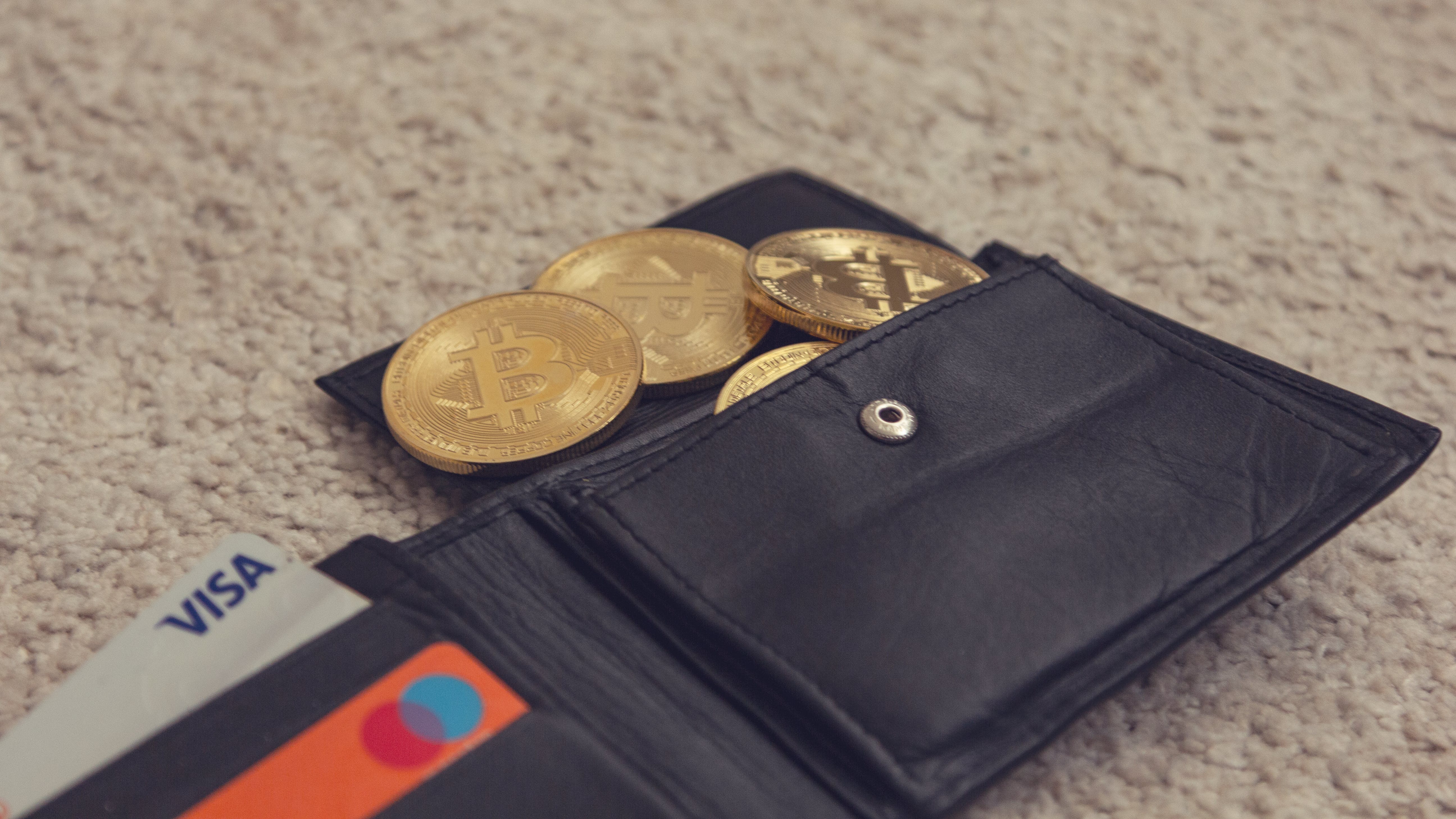What is this Cryptocurrency, and How does it Work?🤷♀️
 Antigha Victor Eyo
Antigha Victor Eyo
Cryptocurrency – meaning and definition
Cryptocurrency, often known as crypto-currency or crypto, is any digital or virtual currency that uses encryption to safeguard transactions. It works with decentralized networks, most of which are built using blockchain technology. In contrast to traditional government-issued currencies (such as the US dollar or the euro), cryptocurrencies operate independently of a central authority.
What is cryptocurrency?
A digital payment method known as cryptocurrency eliminates the need for bank verification of transactions. It is a P2P (peer-to-peer) payment system that allows anyone, anywhere, to send and receive money. Instead of physical currency being carried and traded in the real world, cryptocurrency payments exist only as digital entries into online databases that identify specific transactions. When you send cryptocurrency funds, the transaction is recorded in a public ledger. A digital wallet is a place to store your cryptocurrency.
Cryptocurrencies can be used for a variety of reasons, including as a medium of exchange, investment, remittance, smart contracts (via platforms like Ethereum), and to facilitate decentralized finance (DeFi) applications, among others.
The use of encryption to validate transactions is referred to as "cryptocurrency."This means that complex coding is used to store and transport cryptocurrency data between wallets and public ledgers. The goal of encryption is to ensure security and safety.
Bitcoin, the first cryptocurrency, was launched in 2009 and is still the most well-known today. The main attraction of cryptocurrencies is trading for financial gain, with speculators occasionally sending prices through the roof.
Cryptocurrency Examples
Numerous cryptocurrency varieties exist, numbering in the thousands. Here are a few well-known cryptocurrency examples:
Bitcoin (BTC): Bitcoin was the first cryptocurrency, introduced in 2009 by an anonymous individual or group under the pseudonym Satoshi Nakamoto, and it is still the most well-known and frequently utilized cryptocurrency. It runs on a decentralized network and functions as a peer-to-peer electronic cash system.
Ethereum (ETH): Ethereum is a decentralized platform that allows developers to create smart contracts and decentralized apps (DApps) on its blockchain. It was launched in 2015. It introduced the concept of smart contracts, which are self-executing contracts with the contents of the agreement explicitly put into code.
Ripple (XRP): Ripple is a platform as well as a cryptocurrency (XRP). Its goal is to enable quick and low-cost cross-border payments, and it uses a different protocol than most other cryptocurrencies. Ripple aims to increase the efficiency of international transactions for financial institutions.
Litecoin (LTC): Created in 2011 by Charlie Lee, Litecoin is sometimes referred to as the "silver" to Bitcoin's "gold." It was created to enable speedier transaction confirmations and includes a unique hashing algorithm to make it more accessible for ordinary transactions.
Bitcoin Cash (BCH): In 2017, due to disagreements within the Bitcoin community about scalability and transaction speed, a fork of Bitcoin called Bitcoin Cash was created. In comparison to Bitcoin, it attempts to provide faster and less expensive transactions.
Solana (SOL): A high-performance blockchain platform called Solana was created for cryptocurrency projects and decentralized apps. It has fast transaction throughput and cheap fees, and it aims to overcome the scalability difficulties that certain other blockchain networks have.
Binance Coin (BNB): Binance Coin is the native cryptocurrency of the Binance exchange, one of the largest cryptocurrency exchanges in the world. BNB was initially launched on Ethereum as an ERC-20 token, but it was then relocated to Binance's blockchain, Binance Smart Chain (BSC), to facilitate various functions inside the Binance ecosystem.
These are just a few examples of the numerous cryptocurrencies currently on the market. Each cryptocurrency has its own distinct set of features, objectives, and underlying technology that cater to certain parts of decentralized finance, applications, or specific use cases within the larger cryptocurrency ecosystem.
How does crypto work?
Cryptocurrencies work by utilizing cryptographic principles, decentralized networks, and consensus procedures. Here's a quick overview of how cryptocurrencies work:
Decentralized Network: Cryptocurrencies run on decentralized networks of computers (nodes) rather than a centralized server or authority. These networks keep a common ledger of transactions known as a blockchain.
Blockchain Technology: Cryptocurrency transactions are recorded on a blockchain public ledger. Each transaction is collected into a block, and these blocks are chronologically connected to form a chain. The blockchain is managed and updated by numerous network nodes.
Cryptography for Security: Cryptography is used to secure transactions and govern the generation of new units. It uses advanced mathematical techniques to encapsulate transaction data, ensuring privacy, authenticity, and integrity. Each transaction is cryptographically signed by the sender using their private key and validated by the network using the sender's public key.
Consensus methods: Consensus methods are used to verify transactions and maintain the blockchain's integrity. To achieve agreement among network participants regarding the status of the ledger without the need for a governing body, various consensus methods such as Proof of Work (PoW), Proof of Stake (PoS), Delegated Proof of Stake (DPoS), and others are utilized.
Wallets and Keys: Cryptocurrency owners store their assets in digital wallets. A wallet comprises two cryptographic keys: a public key (used to receive funds) and a private key (used to sign transactions and access cash). It is critical to protect the private key since anyone who has access to it can control the linked assets.
Mining and Transaction Validation: Miners execute computational tasks in various cryptocurrency networks that use Proof of Work to validate and add transactions to the blockchain. Miners compete to solve complicated mathematical riddles, and the first to solve the puzzle wins the right to add the next block of transactions and receives incentives in the form of freshly minted currencies and transaction fees.
Peer-to-peer transactions: Users can transfer cryptocurrency to other users directly, bypassing middlemen like banks. After being broadcast to the network, transactions are checked by nodes, uploaded to the blockchain, and, if approved, turned irreversible.
Transparent Ledger: Once a transaction is recorded on the blockchain, it cannot be edited or removed. The transparency of the blockchain allows anyone to observe transaction history, boosting confidence and responsibility within the network.
Cryptocurrencies leverage these basic principles to enable safe, decentralized, and transparent peer-to-peer transactions, intending to provide an alternative to established financial systems and offer individuals more control over their financial holdings.
Can crypto be converted to cash?

Users can indeed convert cryptocurrencies into cash using a variety of platforms and techniques. This means they can trade their digital assets for fiat currencies such as US dollars, euros, yen, and so on. Here are a few typical methods for converting cryptocurrency to money:
Crypto Exchanges: Online marketplaces where users can trade virtual currencies are known as cryptocurrency exchanges. The ability to trade cryptocurrency for fiat money is offered by many platforms. When you sell your cryptocurrency on an exchange, you can usually withdraw the proceeds in fiat currency to your bank account.
Peer-to-Peer (P2P) Networks: A few P2P networks enable one-to-one transactions. Buyers who are interested in buying cryptocurrencies with cash or online payment options can be found by users. These platforms serve as middlemen to enable safe transactions.
Crypto-to-Debit Cards: A few businesses provide debit cards connected to wallets for cryptocurrencies. Users can load Bitcoin onto their cards, and when they make a purchase, the cryptocurrency is instantly converted to cash. This enables them to spend their digital assets at establishments that do not directly take cryptocurrencies.
Peer-to-peer transactions: People can sell their bitcoins to other people directly and get paid in cash. This approach entails setting up a transaction with a different individual who is prepared to exchange cryptocurrency for money.
Cryptocurrency ATMs: Cash is accepted for the purchase or sale of cryptocurrencies at cryptocurrency ATMs, commonly referred to as Bitcoin ATMs. In exchange for cash, users can either deposit cryptocurrency into the ATM or use cash to purchase cryptocurrency.
It's crucial to consider aspects like fees, exchange rates, withdrawal restrictions, and the security and dependability of the process while converting cryptocurrency to cash. Furthermore, tax ramifications may apply based on the country's legislation and the gains realized from cryptocurrency sales.
How to Buy Cryptocurrency

Purchasing cryptocurrency is a multi-step process that should be done carefully. This is a basic how-to instruction for purchasing cryptocurrencies:
Choose a Reputable Platform: Before making your purchase, do your homework and decide on a reliable cryptocurrency exchange or platform. Among the well-known exchanges are Gemini, Coinbase, Binance, and others. Make sure the exchange accepts the cryptocurrency you wish to purchase and is accessible in your nation.
Create an Account: Go to the platform of your choice and create an account. Typically, this entails giving personal information, establishing security measures like two-factor authentication (2FA), and confirming your identity by uploading identification papers.
Choose your coin: Decide on the coin you wish to purchase. Most platforms regularly have Ethereum (ETH) and Bitcoin (BTC) available. However, choose the cryptocurrency you want to buy from the platform's numerous offers.
Funds Deposit: Fund your platform account with fiat currency (USD, EUR, etc.). Direct bank transfers and credit/debit card purchases are also permitted by certain platforms. To deposit funds into your account, simply follow the instructions provided by the platform.
Make an Order: After your account has been financed, go to the platform's trading page and make an order to purchase the cryptocurrency of your choice. Generally, you have the option of either a limit order, which sets a specified price that you want to buy, or a market order, which buys at the going rate.
Safely Store Your Cryptocurrency: Move your cryptocurrency to a secure digital wallet as soon as you buy it. Because of security hazards, long-term storage on platforms is not advised. More secure storage solutions are provided by hardware wallets, software wallets, and paper wallets.
Keep an Eye on Your Investment: Remain informed about news and market movements while keeping tabs on your cryptocurrency holdings. Given the volatile nature of cryptocurrency markets, it's critical to monitor changes in value.
Keep in mind that there is risk involved with cryptocurrency investment and that prices can fluctuate greatly. Before making any investment selections, make sure you have done your homework and only make investments with money that you can afford to lose. Be cautious of transaction fees, currency rates, and any tax implications when purchasing and selling cryptocurrencies.
How to Store Cryptocurrency
It's essential to properly store cryptocurrencies to prevent the loss or theft of your digital assets. Here are a few strategies to think about when storing your cryptocurrency:

1. Wallets for cryptocurrency:
Hardware Wallets: These physical wallets keep your cryptocurrency offline and are considered one of the safest solutions. They are not vulnerable to cyberattacks. Trezor, Ledger Nano S, and Ledger Nano X are examples.
Software wallets: These are programs or applications you can install on your computer, access online, or use on your smartphone. Although practical, they could be vulnerable to viruses or cyberattacks if the device is compromised. Exodus, MyEtherWallet, Trust Wallet, and other apps are a few examples.
Paper Wallets: Creating a paper wallet entails printing your public key as well as your private key and keeping it in a secure location. Once created and stored properly, it is completely offline and regarded as extremely secure.
2. Cold Storage: Keeping cryptocurrency offline to reduce its vulnerability to online cyberattacks is known as cold storage. Cold storage might take the form of paper wallets or hardware wallets.
3. Hot Wallets: Wallets that are connected to the internet via software or the internet are known as "hot wallets." Compared to cold storage, they can be more susceptible to cyberattacks, even though they provide ease for frequent transactions.
4. Security Procedures:
Backup Your Wallet: Make sure you have several copies of the recovery phrase or private keys stored in your wallet. These backups should be kept in safe, distinct places.
Employ robust security measures. Whenever feasible, enable two-factor authentication (2FA) and upgrade your software wallets to the most recent versions to take advantage of security patches.
5. Research: Examine and comprehend the security features of the wallet or storage solution that you have selected at all times. Examine user experiences, security tips, and reviews from authorities on cryptocurrencies.
Recall that, to protect your cryptocurrency assets, you must exercise caution and implement sufficient security measures, regardless of the storage option you select. Keep up with best practices regularly to make sure your valuables are safeguarded.
7 Tips to Invest in Cryptocurrency Safely
All investments involve risk, according to Consumer Reports, although some analysts rank cryptocurrencies among the riskier investing options available. These tips can assist you in making informed decisions if you intend to invest in cryptocurrency:
Do Your Research: Investigate the cryptocurrency you are interested in in depth before investing. Recognize its use case, technology, team, community support, market trends, and possible hazards.
Only Invest Money You Can Afford to Lose: The cryptocurrency markets are incredibly erratic and volatile. Invest a sum that you can afford to lose completely without having a major negative influence on your lifestyle or finances.
Select credible platforms and wallets: When purchasing, selling, and trading cryptocurrencies, be sure the platforms are credible and well-established. Additionally, save your digital valuables in safe wallets. In general, hardware wallets are more secure for storing data over time.
Protect Your Financial Assets: Put strong security measures in place for your platform accounts and wallets. Utilize strong passwords, keep your private keys safe, and enable two-factor authentication (2FA) wherever you can.
Invest Diversely: Refrain from allocating all of your capital to a single coin. To spread risk, distribute your cryptocurrency assets across several different ones. This tactic lessens losses if a specific asset performs poorly.
Be cautious of fraud and scams. Phishing efforts, fraudulent schemes, and scams are common in the cryptocurrency world. Steer clear of investing in dubious projects that demand personal information or secret keys in exchange for improbable profits.
Seek Professional Advice: If you're new to investing or unsure about any cryptocurrency project, think about talking to financial advisors or other professionals with experience investing in cryptocurrencies.
There are inherent hazards associated with cryptocurrency investing, and no rewards are guaranteed. It's critical to approach cryptocurrency investments cautiously, carry out in-depth research, and make well-informed choices depending on your investment objectives and risk tolerance.

FAQS
1) Is cryptocurrency safe?
Even though cryptocurrencies provide advantages like decentralization, accessibility, and possible financial gains, it's important to use caution and be aware of the risks involved. To improve security:
Make use of reliable and safe exchanges.
Use strong password protection for wallets and accounts.
Ensure the diversification of your finances.
Keep up with changes in regulations, technological advancements, and industry trends.
Invest only the money you are willing to lose.
The security of cryptocurrency investments ultimately rests on individual behavior, risk appetite, and the capacity to make wise choices in an ever-changing market.
2) Which coin is best to invest in?
Top Cryptocurrencies to Consider in 2024
Bitcoin (BTC)
Ethereum (ETH)
Cardano (ADA)
Solana (SOL)
Polkadot (DOT)
Binance Coin (BNB)
Avalanche (AVAX)
Chainlink (LINK)
3) How much money do you need to start crypto?
Investing in cryptocurrencies can be done with as little as a few dollars in principle. For instance, the majority of cryptocurrency platforms have a minimum trade amount of $20 or $50. The minimum on other cryptocurrency trading apps may be considerably lower.
4) Which trading style is most suitable for novices?
For novice investors in particular, the Indian stock market is an excellent area to start making investments. Additionally, it provides a great chance for those who wish to enter the market without having to worry about the specifics of purchasing and selling equities. There are numerous benefits for investors in the Indian stock market.
Subscribe to my newsletter
Read articles from Antigha Victor Eyo directly inside your inbox. Subscribe to the newsletter, and don't miss out.
Written by

Antigha Victor Eyo
Antigha Victor Eyo
I'm a junior technical writer with experience in writing 📖Online user guides/manuals and 🧩 API references for 📈SaaS products. I'm experienced in writing. • 📕 Online User Guides | Manuals using #️⃣ Markdown .md, .mdx • 🧩 API's References Documentation • 📋 Software Requirements Specification Document • 📊 Case Study Docs • 💻 System Requirements Specification Document • 🧑💼 Use Cases Specification Document • 📖 User Stories & ✔️ Acceptance Criteria Document